This post may contain affiliate links. If you use these links to buy something we may earn a commission. Thanks.
Low-growing edible ground covers don’t just have to be useful or tasty, they can also be low maintenance.
For each of these ground covers, I’ll detail what is edible about them, ideas for using them, and the height they grow so you can make the best decision in one place.
If you’d like low-growing fruiting ground covers you’ll love this post too, see: 19 Tasty Fruiting (Low-Growing) Ground Covers. This post lacks low-growing ground covers with fruit because so many plants are edible in other ways!
Below, you’ll mostly find low-growers with edible nutritious greens, culinary flavor qualities, and the odd fruiting ground cover that wasn’t discovered at the time of writing the fruit-focused post.
Disclaimer: Food Forest Living or its authors are not responsible for what you choose to consume. Do your own research before consuming as an “edible” or using any herb for medicine. Before planting any of these options check with your local invasive plant council or regional extension office for guidance on plants that may be invasive in your area.
Mushrooms in woodchips or logs are also considered a low-maintenance and edible ground cover.
See: What it Costs to Grow Mushrooms (Indoor vs Outdoor)
Creeping Thyme (Thymus praecox arcticus)
Zones 4-8
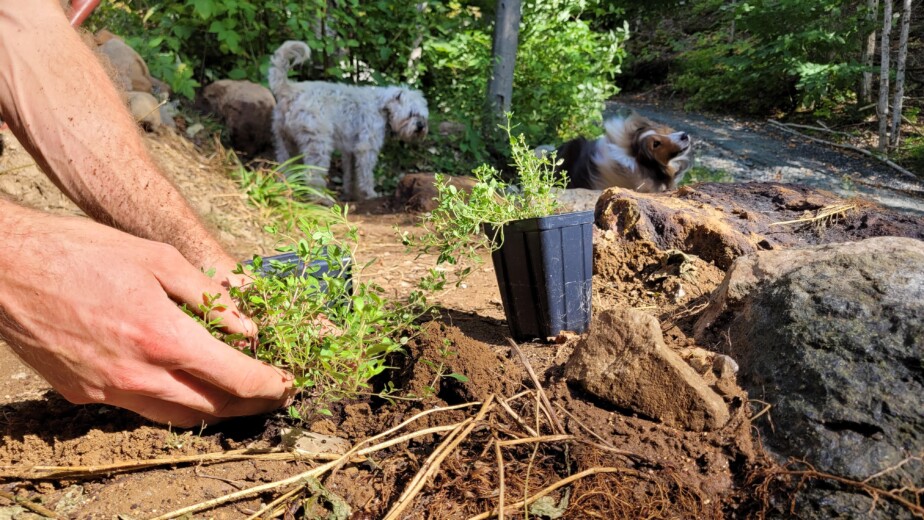
Creeping thyme (Thymus praecox arcticus) is a variety often used as a traffic-hardy ground cover. It’s known for being drought-tolerant, low-maintenance, and multi-functional.
Multi-functions include:
- Pollinator-friendly: when flowering, you’ll have a pink carpet of nectar to attract and support beneficial predators and pollinators to your landscape.
- Edible (of course): thyme is a common culinary herb and fragrant ground cover. Common thyme (thymus vulgaris) is used to cook mushrooms, potatoes, pasta, and more, but those are my favorite. Thyme for tea 😉 is also delicious! This creeping thyme can be used just the same if you wish.
- Fragrance: a great way to repel ticks from your space, enjoy the smell as you walk by, or use for herbal essence by burning.
- Living mulch: ground cover mulch suppresses weeds, conserves water, and prevents erosion. Thyme grows well in quick-draining and erosion-prone soil types (loose sandy or silty soils) that usually demand weeds for structure and preservation.
Creeping thyme grows up to around 4 inches in height.
Creeping Lemon Thyme (Thymus x citriodorus)
Zones 5-10
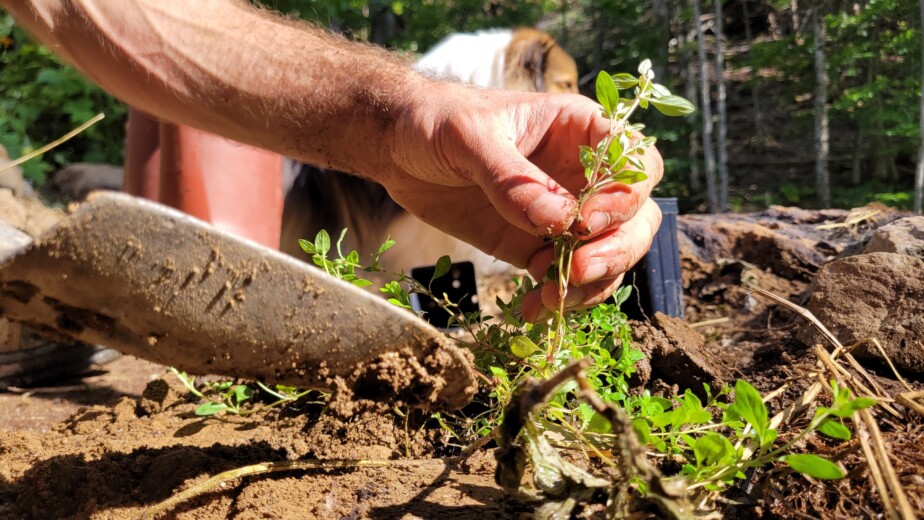
Creeping lemon thyme can be used in all the same ways as regular creeping thyme. The lemon fragrance is a refreshing addition to fresher foods or can act as a citrus substitute.
Creeping lemon thyme has the same benefits as a ground cover and grows up to the same 4-inch height.
If you love lemon, choose this variety or grow and enjoy both!
Cranberry-myrtle (Myrteola nummularia)
Zones 7-10
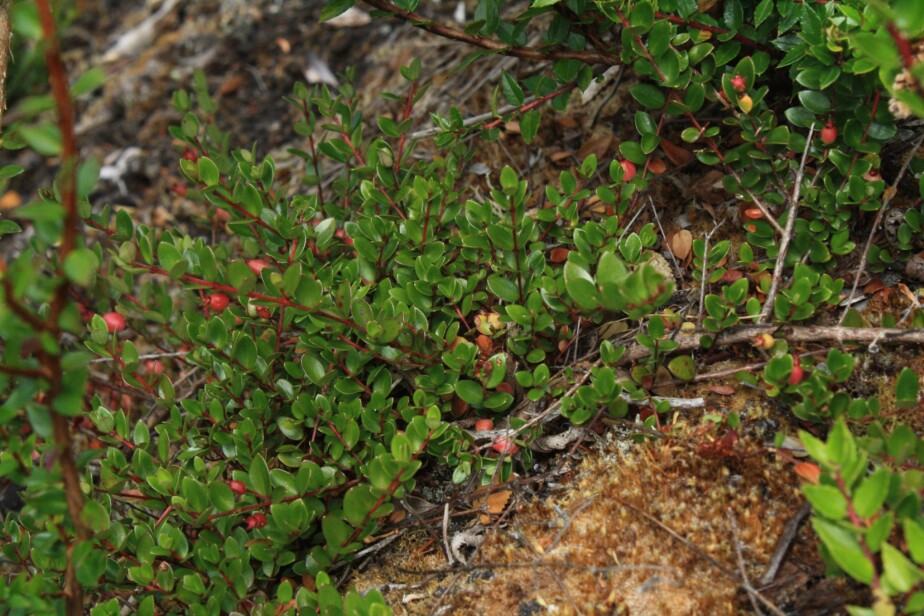
This little ground cover grows up to 6 inches tall and produces edible fruit. The leaves are a good substitute for tea, but before you can harvest it’ll take a couple of years to establish. With slow growth, weeding is an upfront maintenance that diminishes as the vines creep into a thick carpet in time.
Maintenance is low once established and moist or dry soil is suitable. Partial shade is tolerated but more fruit will produce in full sun.
Sweet violet (Viola odorata)
Zones 4-8
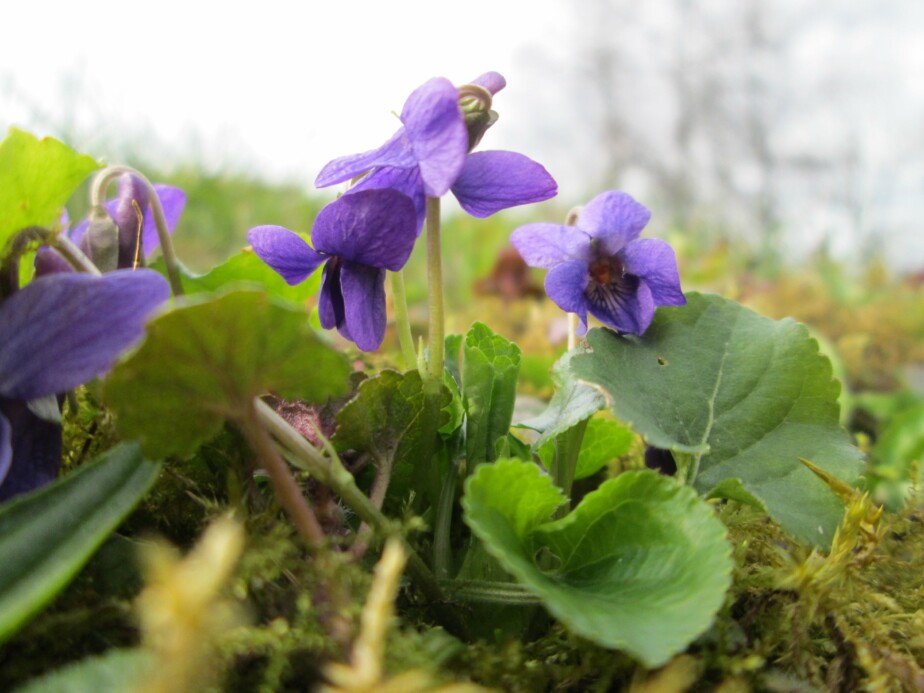
Sweet violet has edible young leaves and flowers both mild in flavor. The plant is considered a dynamic accumulator and can function as a soil builder.
Sweet violet has a native range in Europe, Britain, Norway, North Africa, Asia, and Syria. It’s invasive in North America, so move on to the violet variety below if that’s where you reside. Since it spreads quickly through rhizomes, it’s low maintenance from the day of planting.
Sweet violet grows up to 4 inches in height and becomes a lush easy spreading ground cover. Grow this violet in partial shade or full sun.
Related: 15 Easiest Ground Covers that Thrive in Shade
Labrador Violet (Viola labradorica)
Zones 3-8
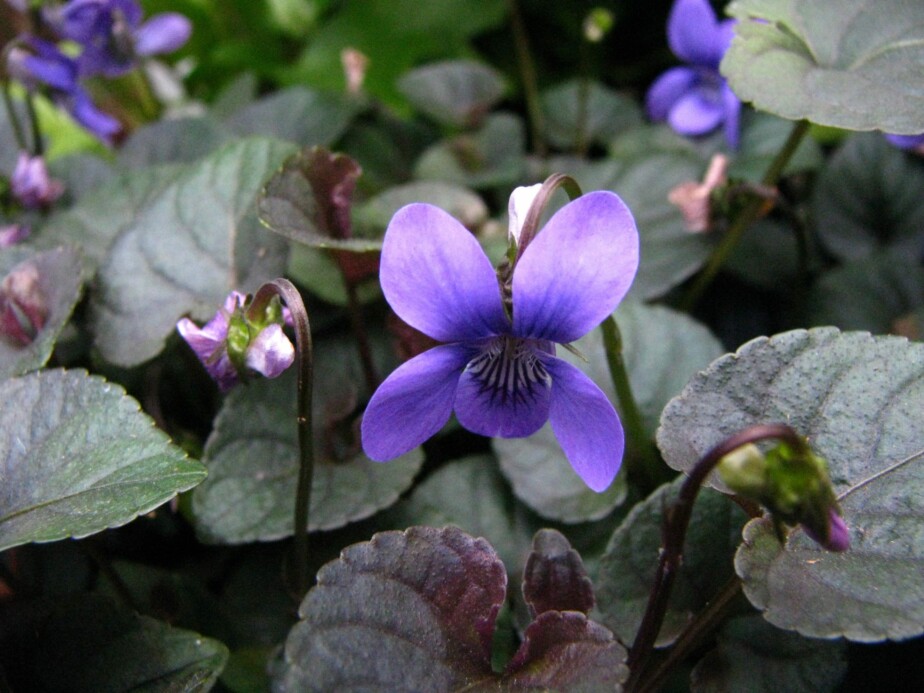
Just as edible as the sweet violet, also with a mild flavor, both can be used to thicken soups. Labrador violet is native to North America and is also considered a dynamic accumulator.
The fast spread makes weed management easy before it fully covers your desired area. It grows up to 4 inches tall.
A difference between violets is this dark-leaved violet grows well in partial shade or full sun.
Pink purslane (Claytonia sibirica)
Zones 3-7
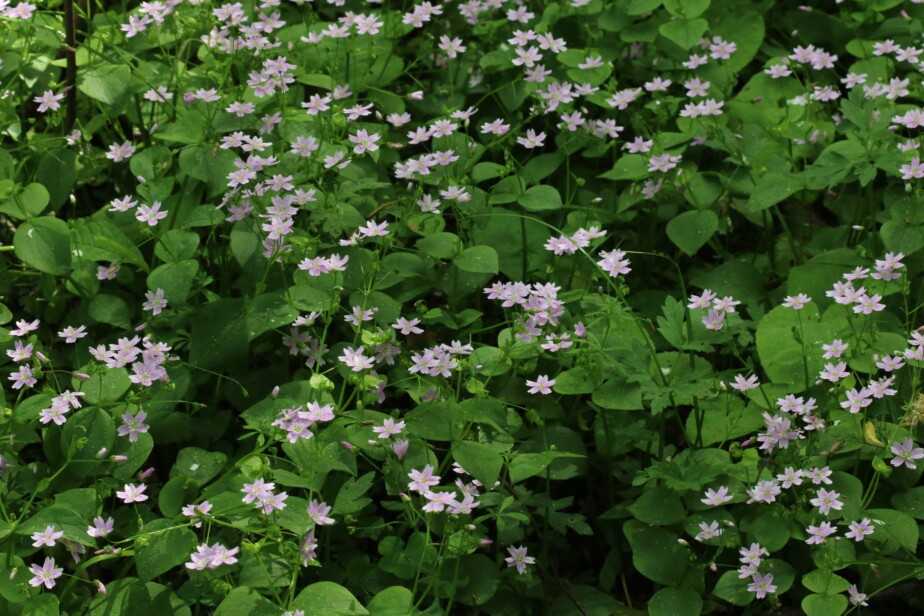
An earthy bland addition to plump up a salad with omega 3’s. To prevent bitterness, place this edible ground cover pink purslane in partial shade.
Full shade to no shade is a suitable situation. Either way, it’ll grow up to 8 inches in height and spread easily as a ground cover. Its fine root system hugs soil into place
Grow this ground cover in full shade or part shade for the best taste and preference of the plant. Purslane grows dense enough to suppress weeds and lights up with flowers from April to July. It spreads by roots and self-sowing seeds easily. Forming a dense rug of cute green foliage, a shortage of salad greens doesn’t have to be a thing.
Society Garlic (Tulbaghia violacea)
Zones 7-11
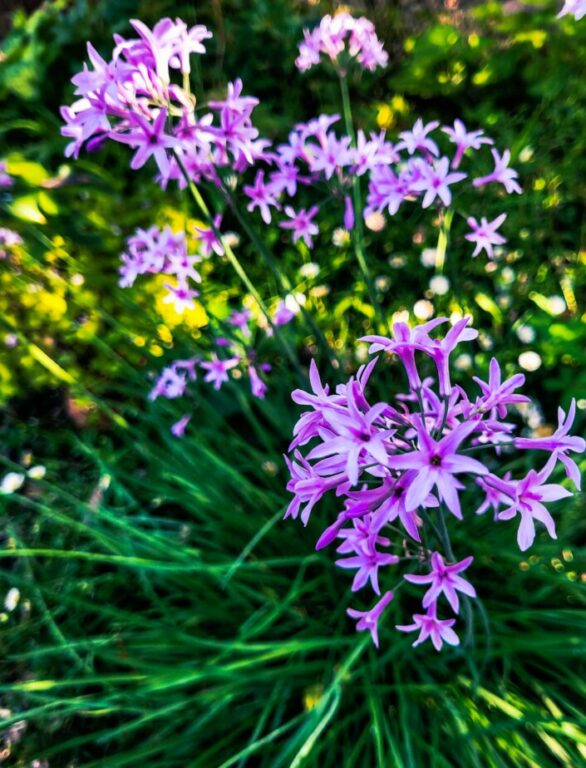
This article was originally published on foodforestliving.com. If it is now published on any other site, it was done without permission from the copyright owner.
Society garlic is a mild but flavorful addition to any bland greens in a salad or as a garnish on any meal that calls for chives. The flowers, leaves, and roots are edible. Although if you’d like a surviving ground cover, stick to the flowers and leaves.
Society garlic grows up to 1 foot tall and is often grown for ornamental purposes as a ground cover or cut flower. Grow society garlic in full sun for lots of flowers. Partial shade also works but may produce fewer flowers.
Trout Lilies (Erythronium americanum)
Zones 3-7
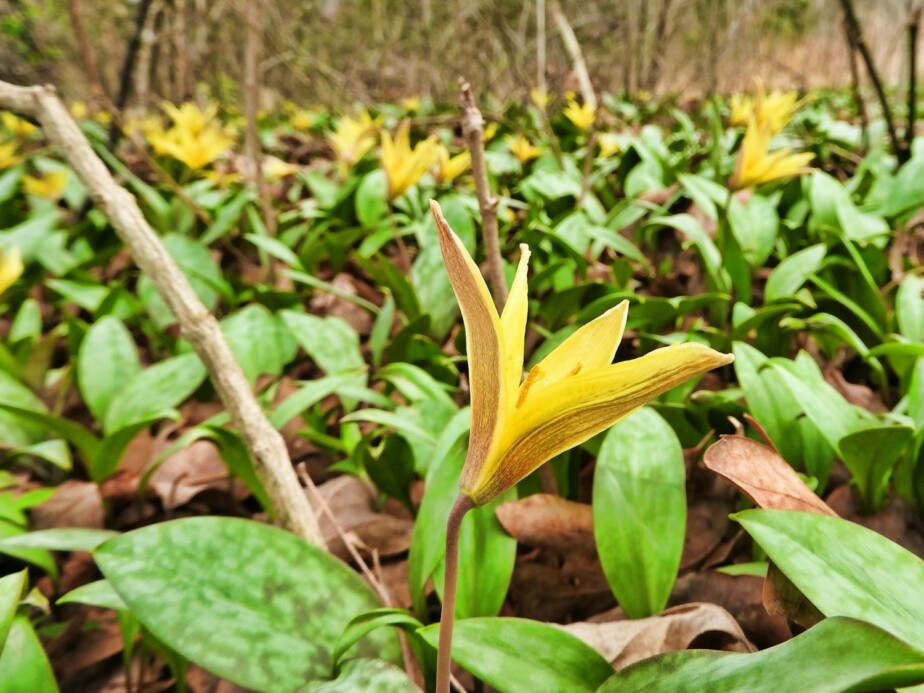
Trout lilies have a variety of flavors. The leaves and stems are mild, the flowers are a little bitter, and the roots (corm) are crunchy with a light cucumber taste. While edible, moderate quantities of trout lily can cause vomiting as its emetic.
A cute ground cover that spreads from runners sprouting new plants and grows up to 8 inches. Trout lilies can take a while to establish and aren’t the densest or most edible ground cover option. But they are low growing and low maintenance with a requirement for part shade.
Corsican Mint (Mentha requienii)
Zones 5-9
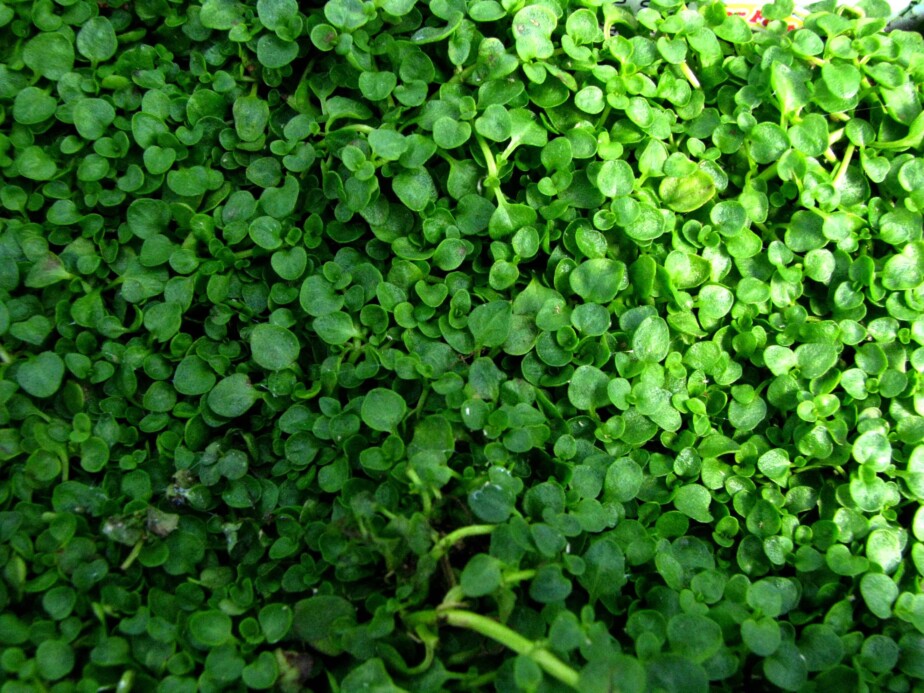
Mint is used to make jellies, tea, Indian cuisine, desserts, and more. The flavor and scent resemble peppermint. Like other mints, the tea is soothing to the stomach and flavor refreshing for the mouth!
Corsican mint is a popular choice for ground cover as it’s tolerant to light traffic and looks gorgeous among similar low-growing ground covers such as creeping thyme. Both are ideal choices between stepping stones.
Corsican mint and chamomile make a good pair of rodent-repelling companion plants.
The height of this mint stays around 4 inches.
Related: 18 Ground Cover Herbs for Full Shade & Part Shade
Trailing Bellflower (Campanula poscharskyana)
Zones 3-7
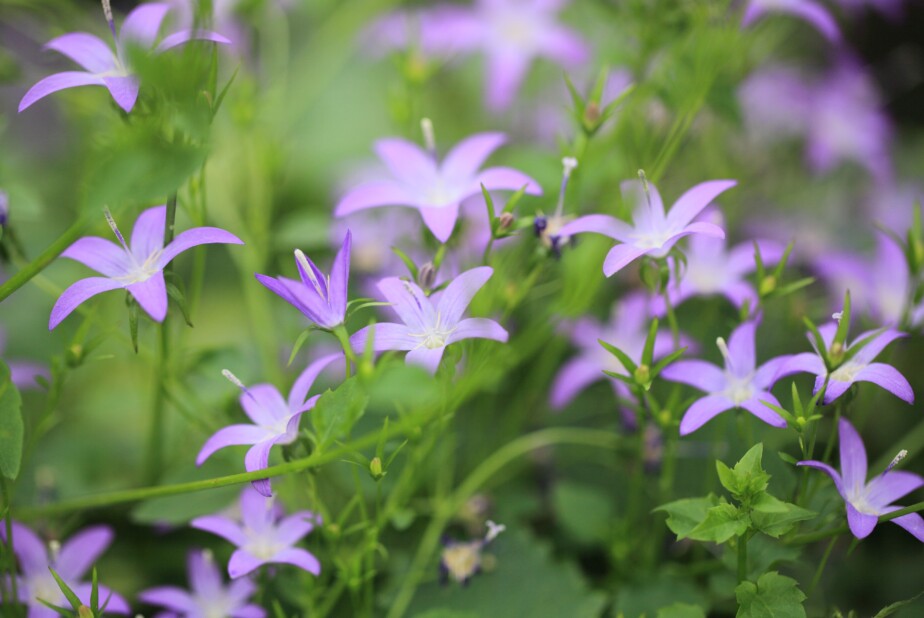
Trailing bellflower is a fast-growing edible green. Edible ground cover with a quick growth rate is always a bonus because it means you’ll actually be able to eat them in quantity once established. Bellflowers aren’t particularly flavorful but can bulk up a salad or greens in a light stirfry.
The flowers can make any plate prettier or be left for attracting bees and butterflies.
It can become invasive in certain areas which could call for some maintenance. But if you plan to be eating the ground cover of choice, then this is a low-maintenance plant that has no problem growing easily or establishing.
Trailing bell flowers can reach a height of 1 foot. full sun will prevent it from becoming leggy.
Winter Savory (Satureja Montana)
Zones 6-11
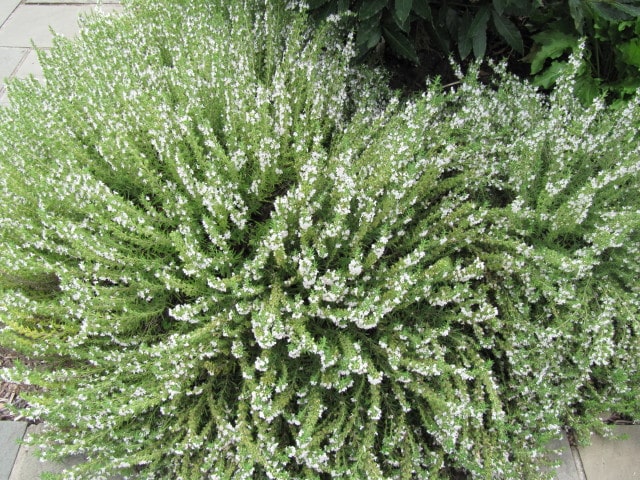
Winter savory is a common culinary herb used in all sorts of recipes. We find it very similar to summer savory, but we’ve also found it to be stronger in flavor. We’ve dried and used it to make soups and stews over the winter months. I also drink both summer and winter savory as a tea.
Winter savory tends to clump densely in a ground-hugging manner which is why it’s often chosen as a grounded cover shrub. It grows around a 1-foot height so is considered a low-growing ground cover for a non-creeping type of plant.
This plant is also considered a dynamic accumulator. Add it to the compost pile or drop it in place when pruning to build and replenish your soil. The scent repels pests and flowers attract pollinators.
Herbaceous perennials with similar growth habits, such as catmint, can be used the same.
Chives (Allium schoenoprasum)
Zones 5-11
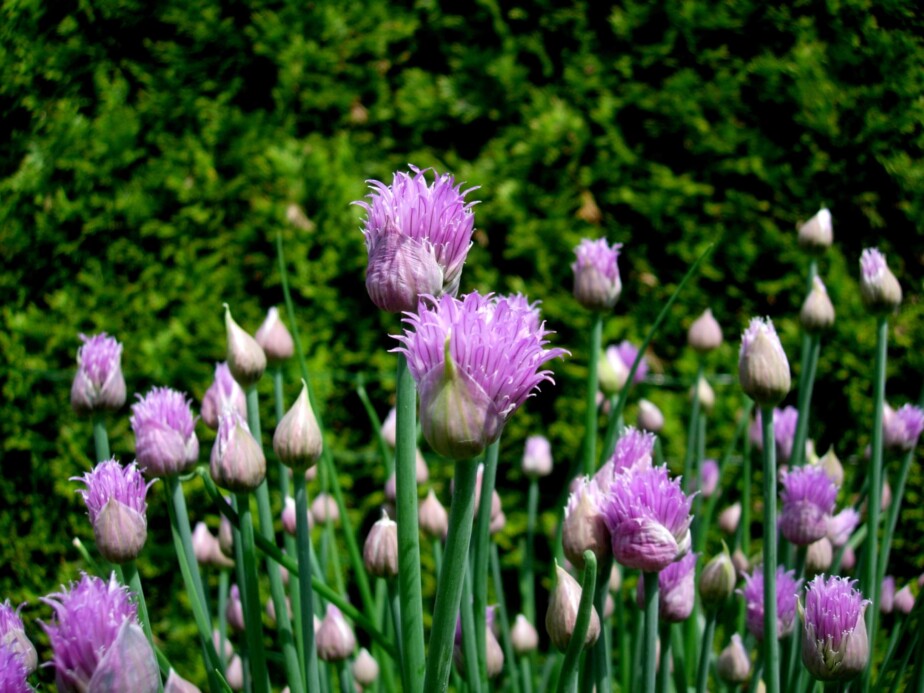
If you’d rather opt for chives instead of society garlic, well, chives work just the same as a ground cover. With a dense clumping habit, it easily self-sows new plants for spreading. The plant itself has limited spread, but several can grow side by side to cover an area if you live chives!
Chives grow around 1 foot in height.
These taller (but still low-growing) ground cover options that don’t trail the ground (but still grow below one foot) can add variation to the edges of a ground cover landscape. Alternating heights, textures, colors, and scents all combine into gorgeous and functional polycultures.
I hope these various options have provided you with some ideas and guidance on what to choose for your space.
Up Next: 24 Best Edible Ground Covers for Shade
Recent Posts
There’s no shortage of full-sun ground covers for zone 4 climates! Each plant in this list can withstand the frigid temperatures and also enjoy the hot sun in summer. Full sun means that a plant...
There's no shortage of full sun ground covers, not even in zone 3! Zone 3 climates offer hot but short-lived summers and very cold winters. So each plant in this list can withstand the frigid...
